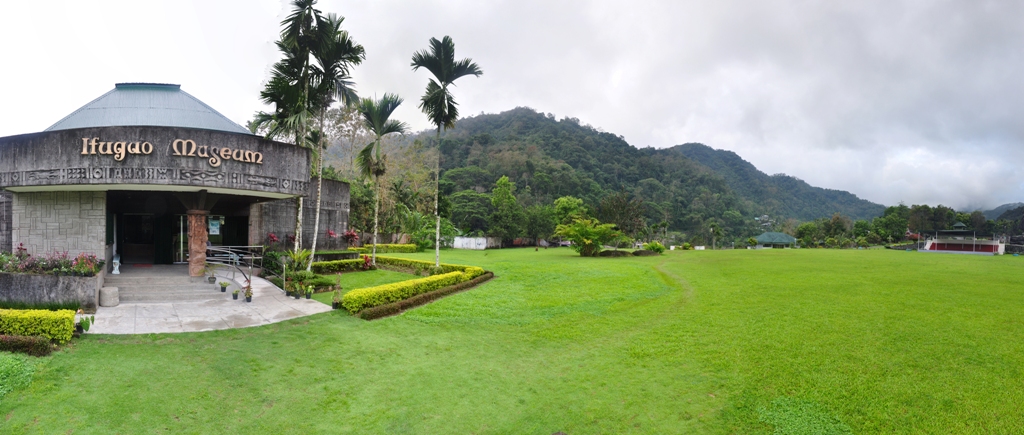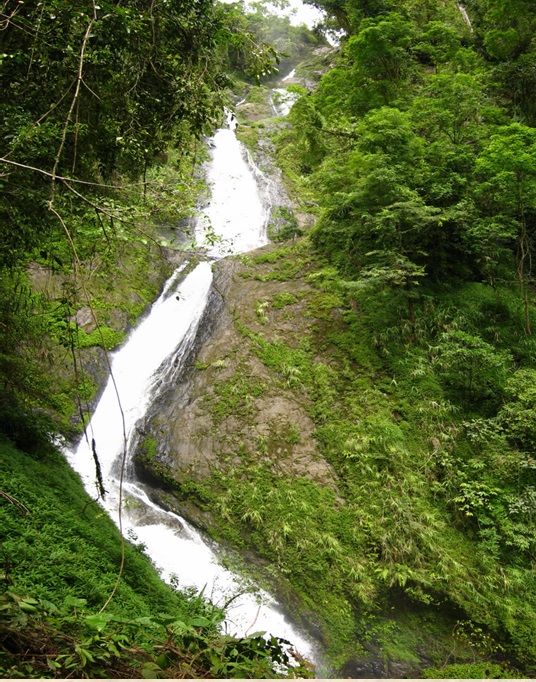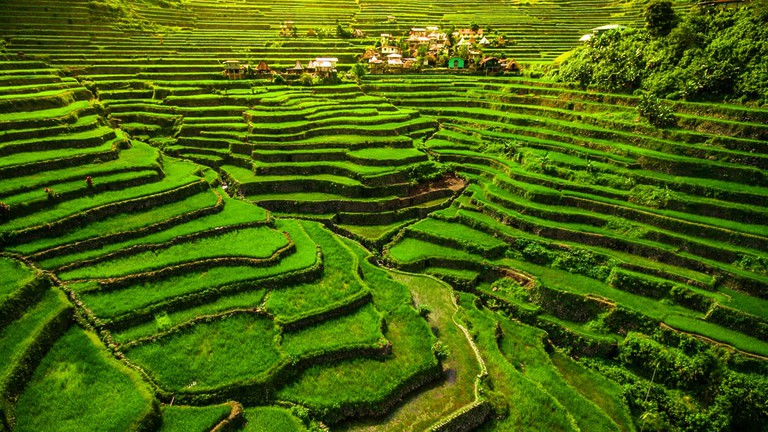Okay, are you planning to go to Ifugao? Do you know where are you going, what to do and see in Ifugao Philippines?

In this article, you will discover the Historical, Cultural, Natural, Man-Made, Festivals, and the special interest you can see in Ifugao Philippines.
Historical
Philippine War Memorial Shrine (Kiangan)
Gigantic memorial shrine to commemorate the end of WWII. A concrete pyramid type structure which resembles an oversized Ifugao native house. Depicts historical events from Filipino opposition to the Death March and the role of the Ifugao and American troops in the defeat of General Yamashita. Could be used as a viewpoint of the Poblacion, other neighboring barangays, and the capital town of Lagawe. Located at Linda, Kiangan and is 10 kilometers away or a 15-minute drive from the capital town.
Million Dollar Hill

The hill overlooking the poblacion of Kiangan got its name from the last war when the allied armies spent millions of dollars’ worth of bombs and ammunitions to annihilate the enemies in the area.
General Yamashita’s Surrender Site
Houses relics memorializing the end of WWII in the Philippines. Details of the surrender and signing are available. From here, General Yamashita was brought to Baguio for his formal surrender to the victorious allies.
Mt. Nagchayan
Where Japanese troops fought fierce battles during WWII. The mountain has several grottos, stone walled trenches, and fox holes. One can also find rusty shells on this old battleground.
Cultural
Ifugao Museum (Kiangan)

Displays Ifugao artifacts and is under the supervision of the National Museum of the Philippines, with Ms. Rosario Guinid as curator. It is 32 meters away facing the shrine and 300 meters away from the Municipal Hall.
Tam-an Village
A typical village situated 240 steps down from the Banaue Hotel’s swimming pool. Here woodcarving and hand-woven products are produced and sold to travelers.
Bokiawan Village
12 kilometers from Banaue, located in the center of the Bokiawan rice terraces; where traditional Ifugao practices of land use and livelihood still exist.
Pula and Cambulo Native Village
A rustic village in the first leg of the trekking route from Banaue viewpoint to Banga-an. This cobbled stone village offers a native house stay. The ancient craft of bark cloth weaving thrives here.
Apfo’or Burial Tombs
Large stone mausoleums containing the bones of the town’s ancient warriors and elite. The construction of these Igloos represents the resourceful use of Ifugao stoning technique.
Makaliwagha & Lebhong Burial Caves
Filled with wood coffins and the remains of the first people of Mayoyao. A legend tells of an attentive lizard leading people to these three chambers designating each one for men, women, and children.
Lumauig Stone
A huge enchanted black rock held by only three smaller stones in the middle of the Balangbang river. It is believed to mean that Mayoyao people will stay strong and happy as long as the stone stands.
Other Scenic Sites:
Bocos Village, Poitan Village, Batad Village, Hapao Village, Bangaan Village, Ducligan Village. These villages are charaterize by the presence of a wholesome community where the livelihood activities are within the surroundings, and the houses are clustered in a designated area. These villages showcase the typical Ifugao community.
Natural
Bagnit Waterfalls and Numbungug Waterfalls (Kiangan)

Located in Julongan barangay. Bagnit is a stunning series of cascading falls running over 250 feet while Numbungug is a single majestic fall of over 80 feet in height, falling to the Ibulao river tributaries.
Chuyong Viewpoint
Located near the town proper, it affords a panoramic vista of the Mayoyao World Heritage site cluster. The glory of the site is unrivaled.
Kibayuyong Stone (Hungduan)
A legendary stone which lies next to the Hapao river. The site offers an adventurous spot for river swimming and diving.
Bogya Hot Springs
Located in Ba-ang, it lies in the Hapao river which serves as delightful respite after trekking.
Mt. Amphalagag (Aguinaldo)
Ideal for trekking; at the foot is a series of languid pools for lounging during the afternoon.
Man-Made
Banaue Rice Terraces (Banaue)

Dubbed as the “Eight Wonder of the World”. The rice terraces start from the base of the mountain range and reach up to several thousand feet high. It is said that its length, if put end to end, would encircle half of the globe. Made 2,000 years ago, these rice terraces manifest the engineering skill and ingenuity of the sturdy Ifugaos. Streams and springs found in the mountains were tapped and channeled into irrigation canals that run downhill through the rice terraces.
Batad Rice Terraces (Banaue)
These rice terraces are shaped like an amphitheater and are located in Barangay Batad. The site can be reached by a 12-kilometer ride from Banaue Hotel and a 2-hour hike uphill through mountain trails.
Bangaan Rice Terraces (Banaue)
The rice terraces cluster and village showcases the typical Ifugao community where the livelihood activities are within the surroundings. It is a one-hour ride from Poblacion, Banaue and 20-minute trek down to the village. It can best be viewed from the road to Mayoyao.
Mayoyao Rice Terraces (Mayoyao)
This spot is 44 kilometers away from Poblacion, Banaue. The Poblacion of Mayoyao lies in the midst of these rice terraces thus, upon arrival in the town, one is awed with a breathtaking view of the rice terraces where all the dikes are tiered with flat stones.
Hapao Rice Terraces (Hungduan)
More stone-walled rice terraces, located in the municipality of Hungduan and 55 kilometers from the capital town of Lagawe.
Nagacadan Rice Terraces
Found in Kiangan, these terraces show how forest management and rice terracing are complementary.
Magat Dam (Alfonso Lista)
Reputedly the biggest dam in Asia. Located near the municipality of Alfonso Lista and about 25 kilometers from the town center of Santa Maria.
Festivals
Banaue Imbayah

A three-day festival celebrated every 4 years. Activities include an ethnic parade portraying the evolution of the Ifugao culture followed by ethnic games participated by barangay delegations.
Tungoh ad Hungduan (every April)
A cultural night of songs and dances, and ethnic parades featuring authentic Ifugao ethnic wear and games such as guyyud and dopap. A climb to Mt. Napulawan for the adventurous group is another highlight of this event. Tungoh means rest days for the farmers in Hungduan after the planting season.
Igkumtad ad Mayoyao (Mayoyao; every May 1)
An annual community ethnic festival usually held in April, celebrated with singing, dancing, and drinking rice wine.
Gotad ad Kiangan (Kiangan)
A part of the Ifugao prestige rites and traditionally involves a festive atmosphere that is celebrated with singing, dancing, and drinking wine.
Gotad ad Hingyon
One special day in 12 feasts celebrated by the Ifugao royal class to please their gods. Modern Ifugaos celebrate Gotad in April in the municipality of Hingyon with cultural parades, ethno-modern sports, and booth competition where the best of Ifugao crafts are displayed.
Ammung ad Alfonso Lista (Alfonso Lista)
A special festival celebrating the harmonious co-existence of the different ethnolinguistic groups in this municipality.
Freedom Day Celebration (Kiangan)
An annual victory celebration of the informal surrender of General Yamashita to the American Forces stationed in Kiangan that ended the WWII and marked the birth of peace.
Special Interest
Mt. Amuyao

The 8th highest peak in the Philippines, with an elevation of 2,702 meters above sea level, located between the boundary line of Banaue and Mayoyao and between Ifugao and Mountain Province. Its summit provides the climber with a breath-taking panorama of Mountain Province, Isabela, Nueva Viscaya, and Ifugao. Mayoyao legend says that the first Ifugao couple, Bugan and Wigan, took refuge in this mountain during the 40-day deluge that inundated the province. Being the only survivors, they became the first ancestors of the Ifugaos.
Mount Napulawan (Hungduan)
The second tallest mountain in the province, towering 2,642 meters above sea level, frequented by trekkers. This mountain was the final refuge of General Yamashita. Conquerors of its peak are fascinated by the thick tropical rain forest and its rare flora. Trees near the peak are unusually short.
Mount Anapawon
Centrally located in Ifugao, this mountain peak is considered a potential camping site. It provides a breathtaking view of Hungduan municipality, the low-lying municipalities of Lagawe and Kiangan, and the rice terraces of Hingyon.
